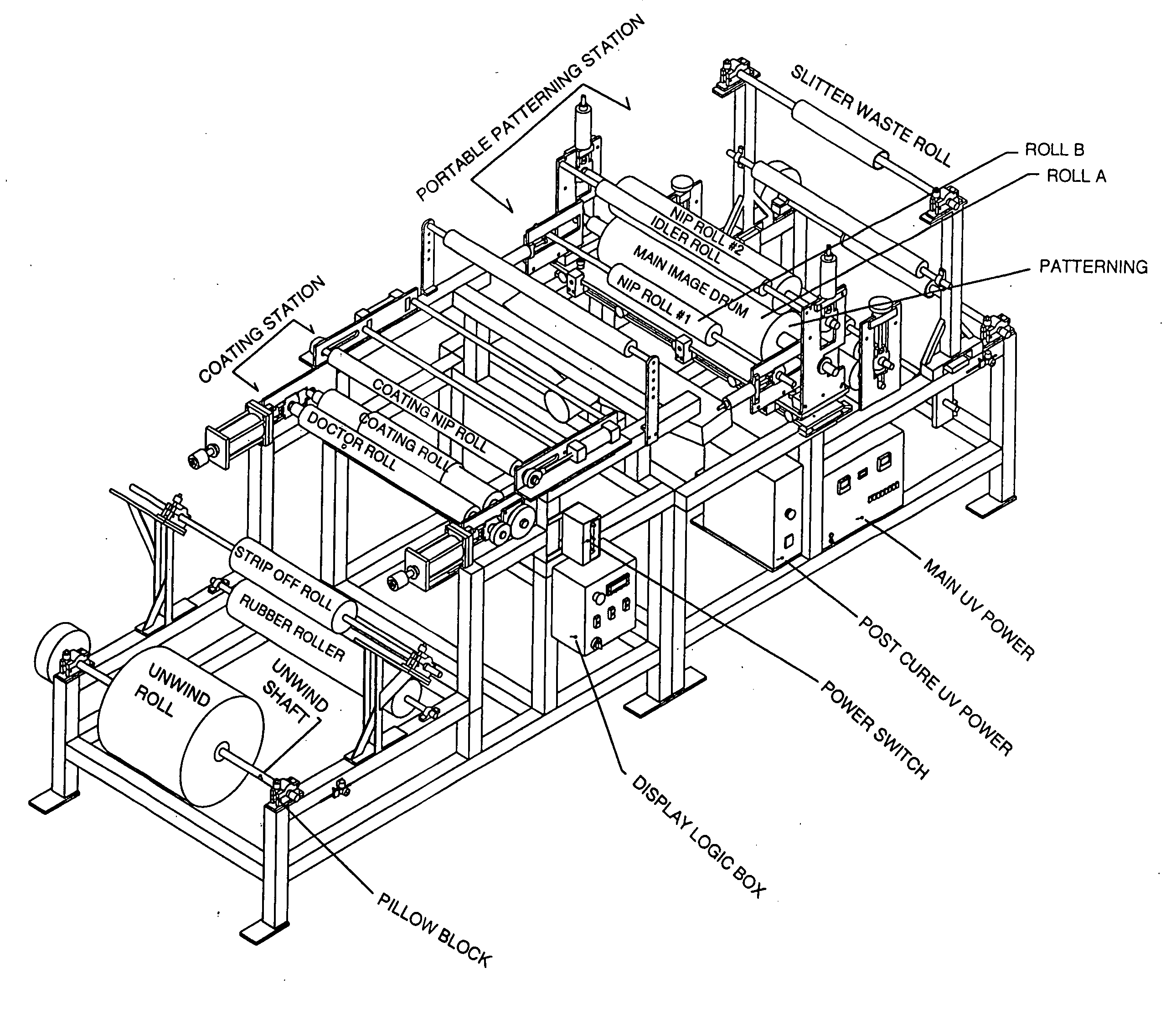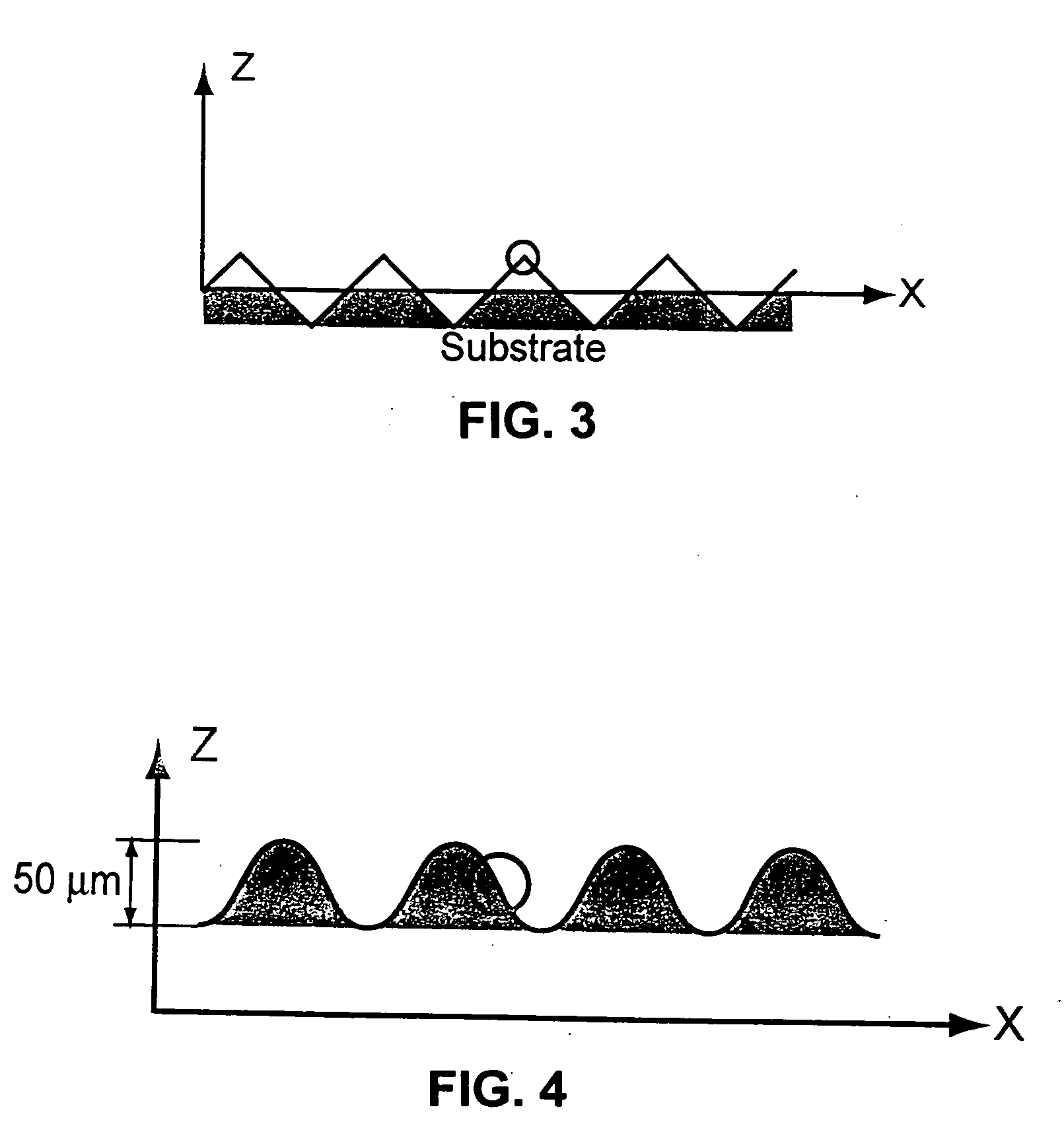Roll-to-roll method and system for micro-replication of a pattern of large relief three-dimensional microstructures
a three-dimensional microstructure and micro-replication technology, applied in the field of rolling to roll replication, to achieve the effect of large viscosity
- Summary
- Abstract
- Description
- Claims
- Application Information
AI Technical Summary
Benefits of technology
Problems solved by technology
Method used
Image
Examples
Embodiment Construction
General Operation of the PALM System
Hybrid PALM Process
[0035]The critical elements of the PALM device are shown in simplified form in FIG. 7. For the sake of simplicity we only show elements essential for functionality of the device. Two basic areas are shown: the coating area and the patterning area, the latter one being the subject of the invention. In the coating area, identified as Region I, the adhesive liquid (fluid) layer is coated on the continuous substrate band (or, film) with 3-4 mils thickness. This layer is about 30 μm thick and contains fluid adhesive at room temperature. It is then transferred through Region II into idler roll C, and then through Region III, until it approaches the self-metering puddle (Region IV), where it is introduced into contact with patterning or image drum A. Here, it is in a vortical mixing area (called the puddle or reservoir) where fluid adhesive is self-metered into Region V, and where adhesive fluid coupling occurs between the substrate f...
PUM
| Property | Measurement | Unit |
|---|---|---|
| Angle | aaaaa | aaaaa |
| Angle | aaaaa | aaaaa |
| Angle | aaaaa | aaaaa |
Abstract
Description
Claims
Application Information
 Login to View More
Login to View More - R&D
- Intellectual Property
- Life Sciences
- Materials
- Tech Scout
- Unparalleled Data Quality
- Higher Quality Content
- 60% Fewer Hallucinations
Browse by: Latest US Patents, China's latest patents, Technical Efficacy Thesaurus, Application Domain, Technology Topic, Popular Technical Reports.
© 2025 PatSnap. All rights reserved.Legal|Privacy policy|Modern Slavery Act Transparency Statement|Sitemap|About US| Contact US: help@patsnap.com



